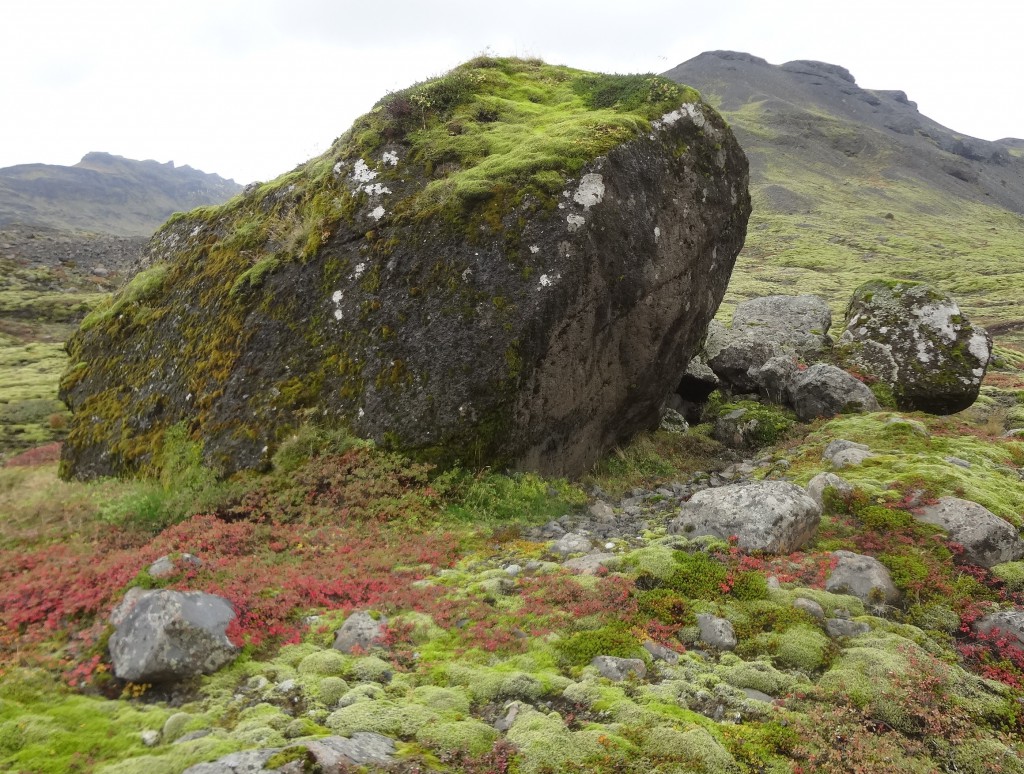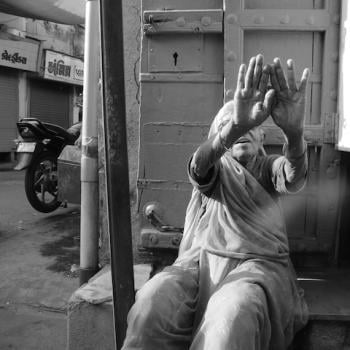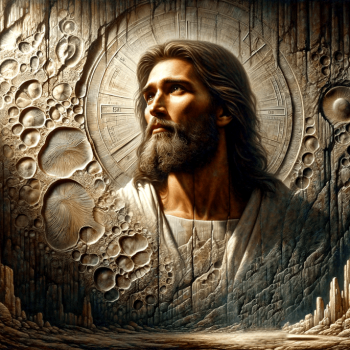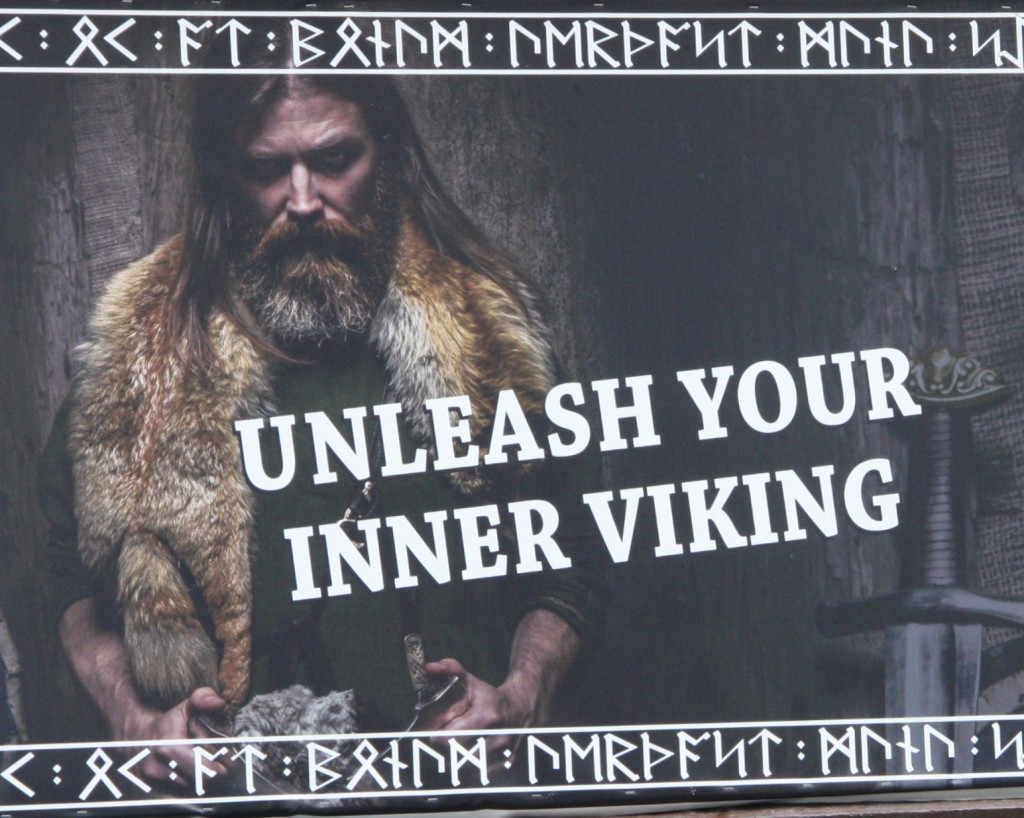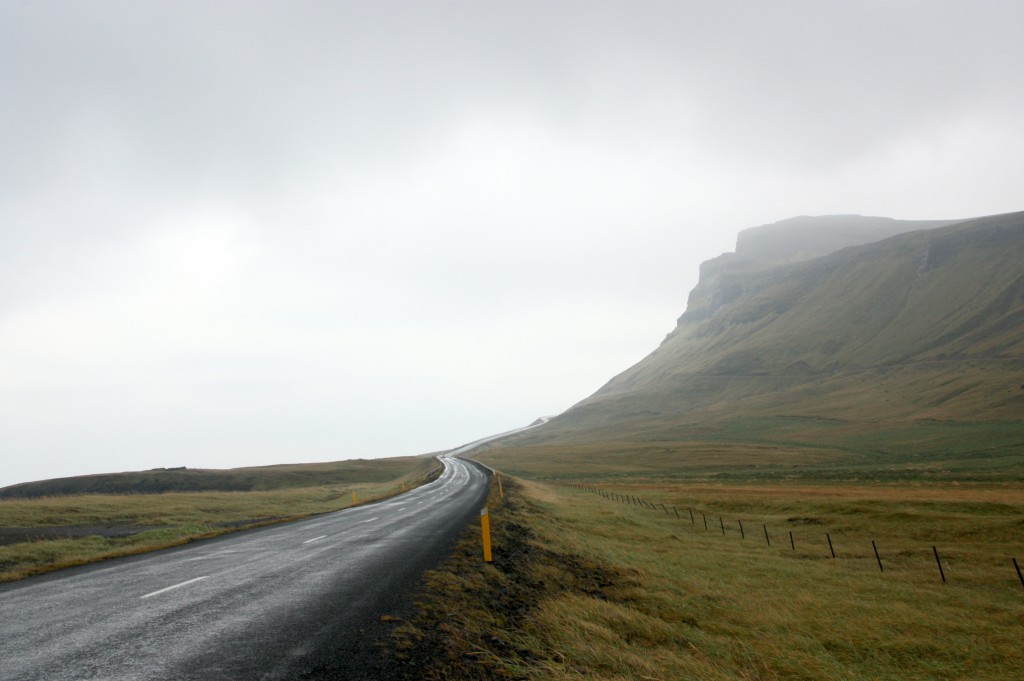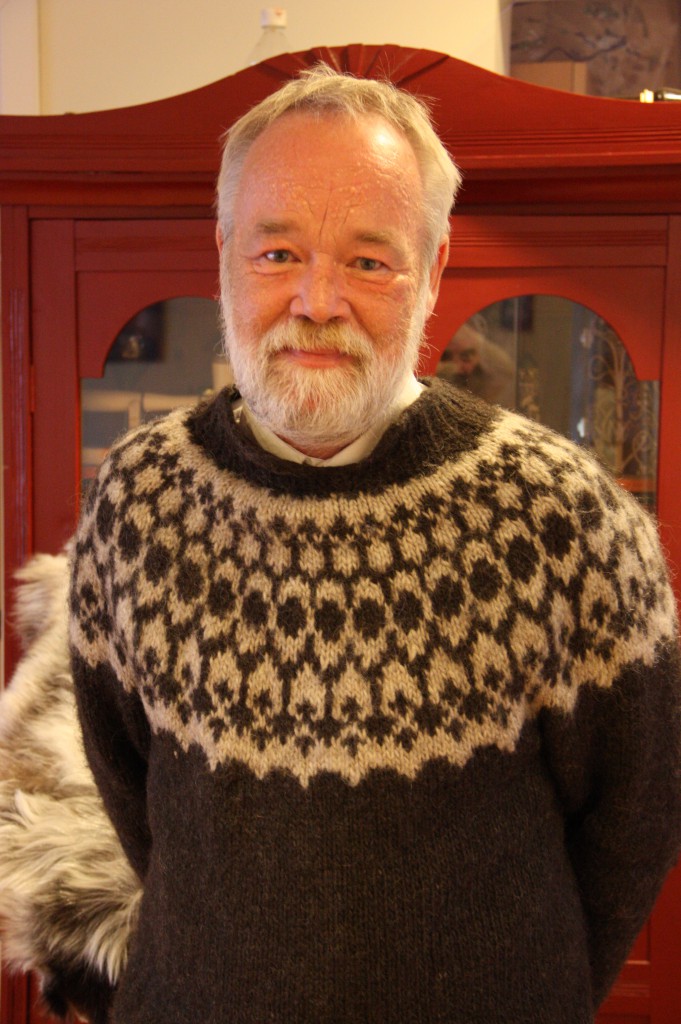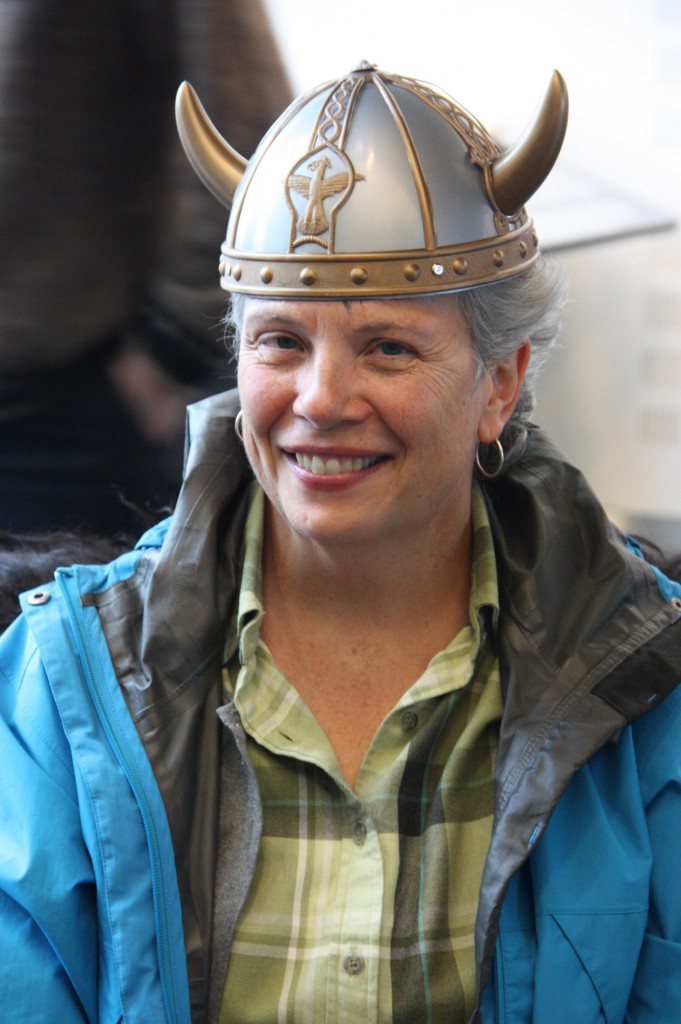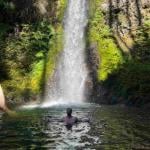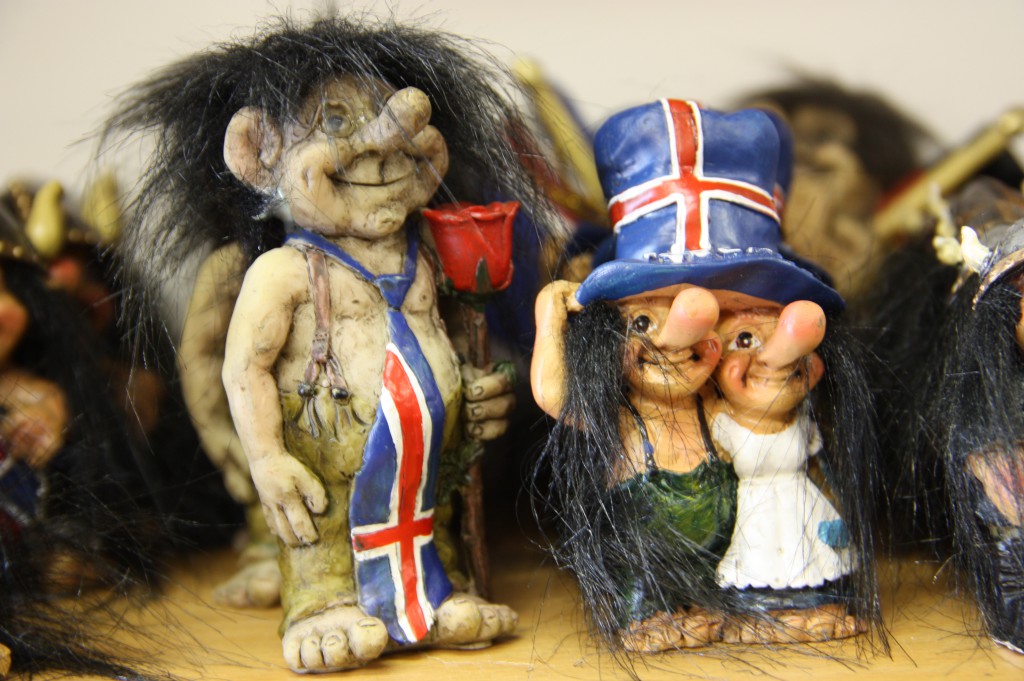
Soon after we arrived in Iceland, Bob and I were browsing in a small town shop when the clerk saw me looking at some figurines for sale. “We have a lot of elves in Iceland, you know,” she said. “More than half of us believe in the Hidden People.”
When I asked if she herself had ever seen one, she assured me she had. “Go up to the park on the edge of town early in the morning and you might see some yourself,” she said.
One of the things I love about my husband is that when I suggest we get up early to hunt for elves, he doesn’t say no, but rather asks what time we need to leave. So the next morning there we were, walking slowly through the woods, peering underneath bushes, and occasionally saying loudly, “Boy, it sure would be nice to see some elves.”
You might see this as weird, but in my line of work this is called research.
We did a lot of elf research in Iceland. Before arriving, I’d read stories of how road planners in Iceland try to avoid places said to be home to huldufólk or Hidden People. Once there, I asked a wide range of Icelanders their opinions, from tour guides and college professors to locals we met while soaking in the public hot tubs that are a major part of Icelandic life.
There was a surprising amount of unanimity in their responses. While few had actually seen one of these creatures themselves, virtually everyone had an open mind about their existence. (The only person who flat-out denied the possibility of elves was a geologist who worked at one of the national parks. Note to self: in the future, do not try to interview scientists about magical creatures.)
I learned many things about elves from these conversations. Several people related the story of why the Hidden People are sometimes called the Dirty Children of Eve. When God asked Eve to show him her children one day, she didn’t have time to clean all of them up and so hid them, and they’ve stayed hidden ever since.
But that doesn’t mean that they stayed dirty. I learned that many of the Hidden People wear elegant clothes, typically in a style of an earlier age. “My grandmother and her sister saw them in a meadow once, and they were dressed in fancy outfits,” a man told me. “She was a militant atheist when it came to religious matters, but to her dying day she believed in elves.”
In the small village of Bakkagerði in the east of Iceland, Bob and I visited Álfabor, a pile of rocks said to be the Throne of the Elf Queen. The local Álfheimar Hotel offers Elf Tours that take visitors up into the surrounding mountains. I spoke to a young man on staff at the hotel who had grown up in the village. “It’s perfectly safe to walk around the throne, but you have to be careful not to move anything on it or take away any stones,” he told us.
He also told a story of a woman he knew who had lost her camera on a hike in the woods. To her astonishment, she came upon it three months later on a river bank and it was in pristine condition despite having been exposed to the elements for so long. When she checked it, she found that it contained pictures she hadn’t taken, shots of grass and stones. “Pretty clearly they were taken by elves,” he said–and who was I to disagree?

Perhaps I should be embarrassed to say that on our trip to Iceland, I actually looked diligently for elves on our hikes and walks. Does this make me crazy? I prefer to think it makes me Icelandic.
But it also has gotten me thinking about what it means to live in a landscape where the Hidden People might appear at any time. Similar traditions occur in other cultures, but Icelanders seem unique in being fully modern and yet open to this possibility. And because of their belief in these beings, Icelanders’ love for their environment comes with a bit of wariness–don’t put a road through that field, for example, or bad things may happen.
Looking back on my time in Iceland, I’m also struck by how my perceptions of the landscape changed because I was looking for the Hidden People. While l’m an avid hiker, I know I walked more deliberately in that landscape than in other places and experienced it more deeply as a result.
That gets to the heart of what most intrigues me about this belief in elves. Most of us live in a disenchanted world, but in Iceland nature is raw enough and close enough that the enchantment is still there. Part of it is the sheer power of its landscape, with its volcanoes, earthquakes, winds, rain and glaciers. In Iceland you know that you’re small and insignificant and that the world has more things in it than you can control or understand.
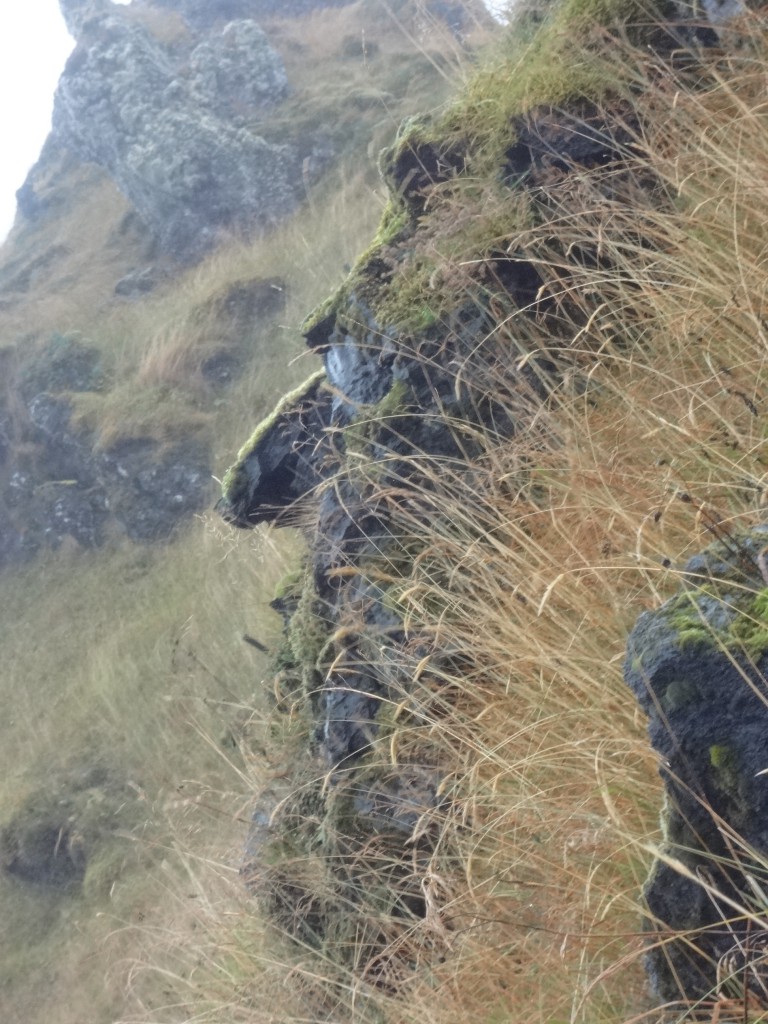
So did we see any elves on our journey through Iceland? The easy answer is no. But let me tell you about two experiences that made me wonder. After visiting a holy spring in the Snæfellsnes Peninsula, I found something unusual on my camera. I had taken a variety of pictures of the spring and its statue of the Virgin Mary (wouldn’t you know that I’d find the one Virgin Mary shrine in all of Iceland). But when I looked through my pictures, I saw the picture at right. While that spring is associated with Mary, I think there may be another spirit watching over it as well.
Will you indulge me with one more story? On our last full day in Iceland, Bob and I took a group hike up a glacier and were heading back through a beautiful valley carpeted with grass and moss. The rest of the people had walked ahead, giving me some time alone with our guide. I peppered him with questions about the Hidden People, which he answered patiently.
“Just up there is an elf church,” he said, pointing to a large rock in the distance. “I’ve never seen anything there, but some people have.”
He told me that there are many stories of humans falling in love with elves. “Sometimes, you see, the person doesn’t realize they’ve met one of the Hidden People,” he said. “It’s only after they’ve fallen in love that the truth is revealed, and then they have to decide whether they’re going to go through the stones and join them forever.”
Then he mentioned that there was a folk song about just such a story. I asked him to sing it, and—after protesting that he didn’t have a good voice–he started singing in a resonant, clear tenor.
As we walked down that verdant valley, he continued to sing, the tune haunting and strange. I couldn’t understand the words but I knew they were filled with longing and sadness, and that the language I was hearing hadn’t changed much since the Vikings had walked this same landscape.
It was, beyond a doubt, a magical interlude, one of my most cherished memories from Iceland. And looking back, I’m not entirely certain my guide was human.
